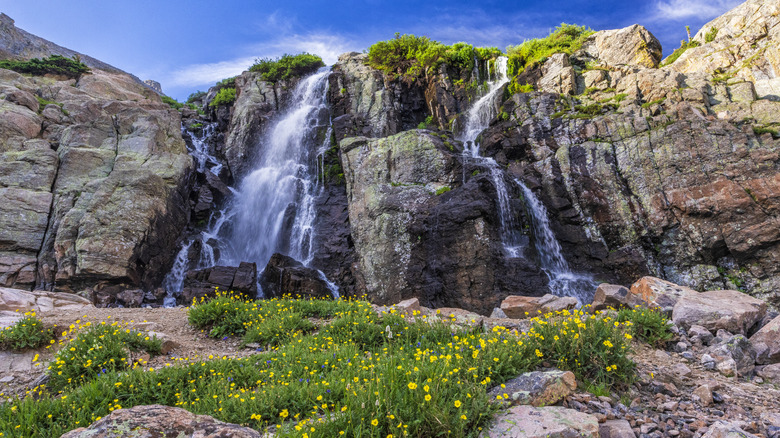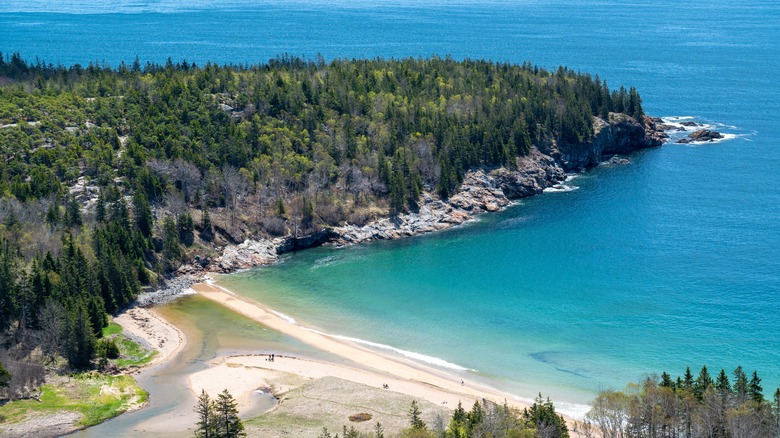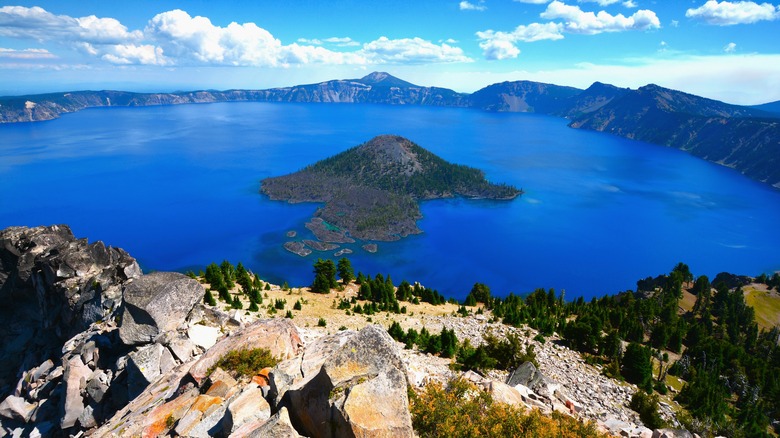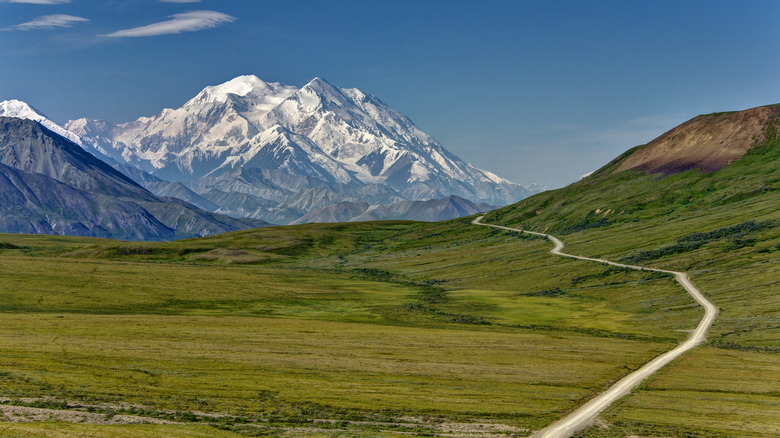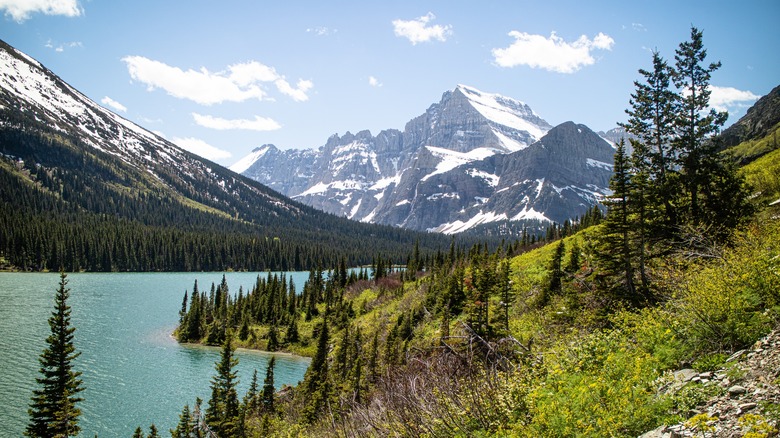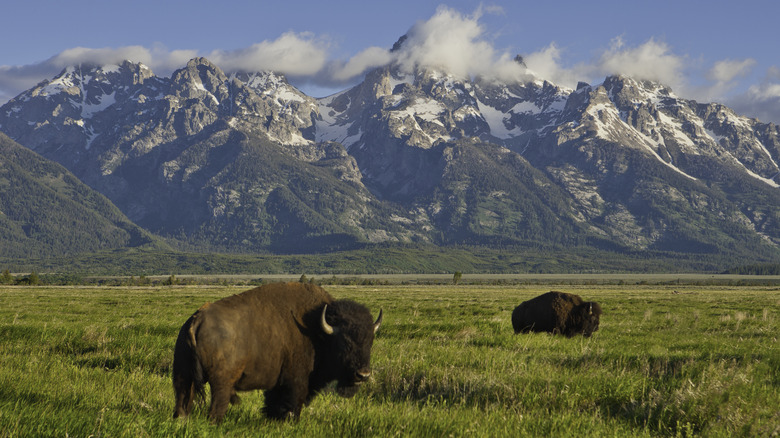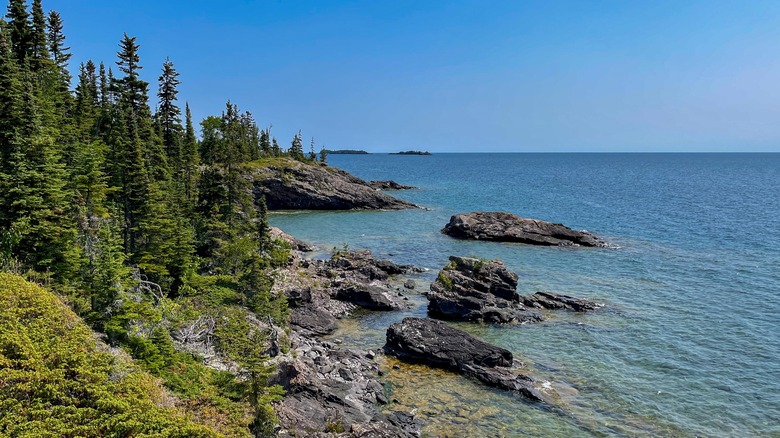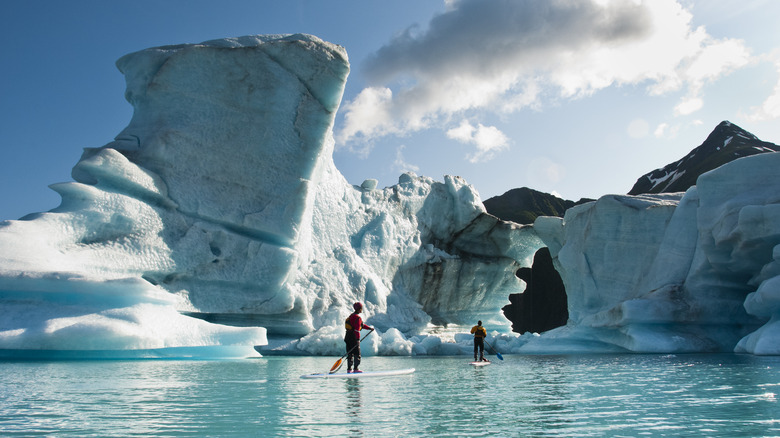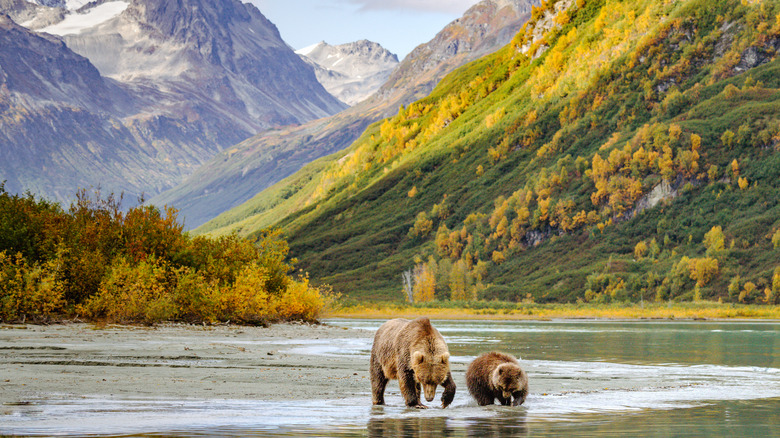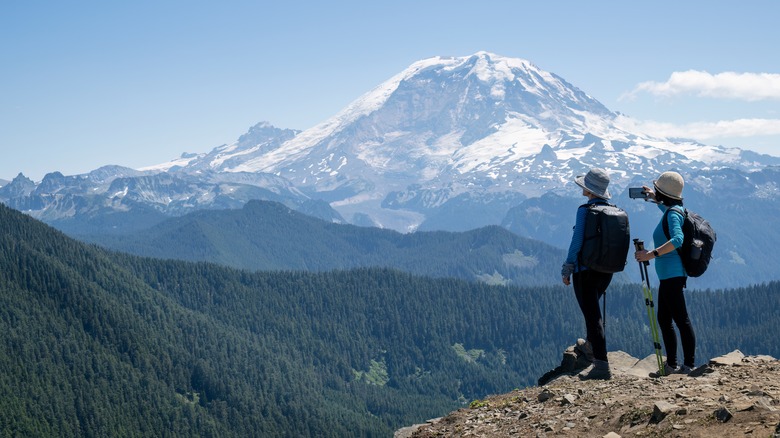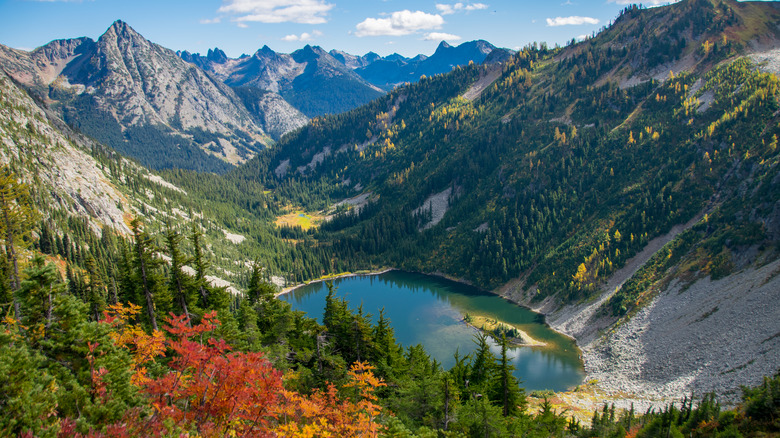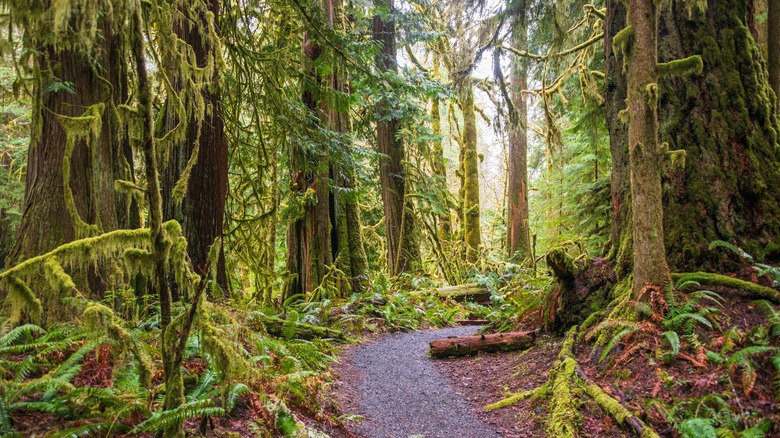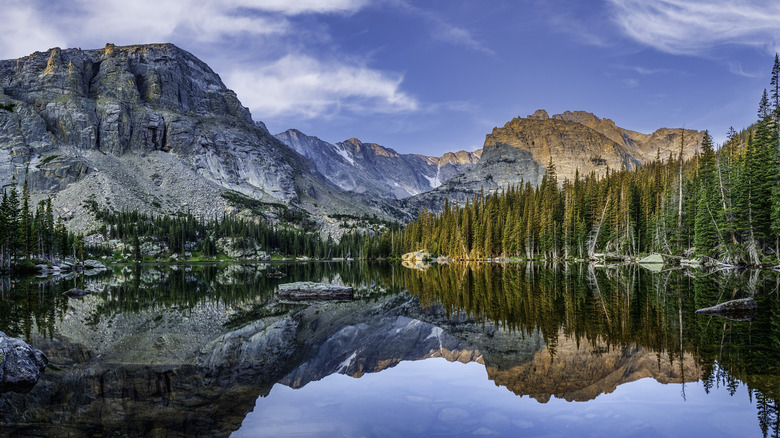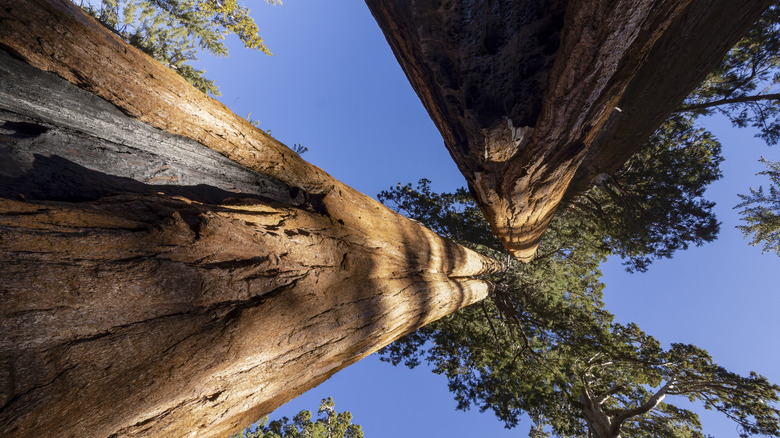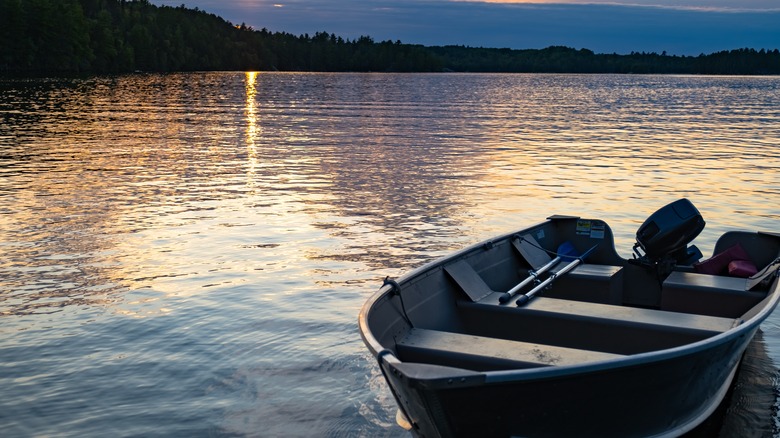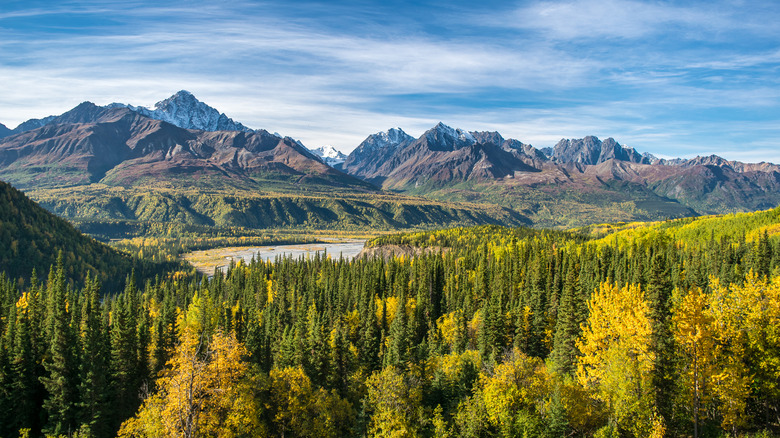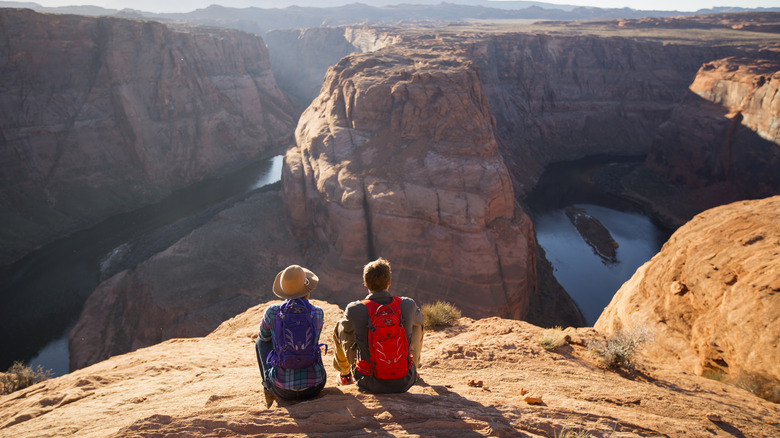The Best National Parks To Beat The Heat, According To Research
National parks often have closures and safety advisories, especially during the summer when wildfires peak. Conditions can change on a daily basis; always check for National Park Service alerts when planning your trip and before setting out for one of these destinations.
The NPS allows visitors to enjoy some truly spectacular sites across all 50 states, from memorials and battlefields to scenic rivers. This list includes the 63 national parks the government agency oversees, which spread across various parts of the United States, from the southeast of the Lower 48 to as far away as Hawaii. Many make great destinations throughout all four seasons, with several of the lesser-known national parks serving as the perfect settings for family vacations. However, in the summer, when kids shed the shackles of school and families often take off for an annual getaway, some of the parks grow uncomfortably hot.
As the mercury rises at these spots, travelers might find themselves less concerned about admiring nature and more interested in hiding away in an air-conditioned space. Yet, nature lovers don't have to let the high temperatures mar their outdoor enjoyment. Using blogs, reviews, and weather data, we've found a strong selection of national parks where you can beat the summer heat and soak in nature without your clothes getting drenched in sweat.
Acadia National Park - Maine
Spread along the Atlantic coastline of Maine, a state with a hidden gem for couples seeking an intimate getaway, Acadia National Park draws people in with its rugged, rocky shoreline that includes the tallest headlands on the Eastern Seaboard. A huge draw for nature enthusiasts in the Northeastern United States, it receives 4 million visitors each year (per NPS). Some come for the almost 160 miles of hiking trails, while others like to meander along the carriage roads. Climbers will find a good selection of routes featuring pink granite cliffs, with some routes promising fine views of the ocean.
For travelers who like their summers less steamy, the park is a smart choice — the summer average temperatures peak around the mid-70s, generally in the months of July and August. The climate is ideal for discovering the charms of Acadia, a destination praised by the blog Jenna Juby. "Acadia is STUNNING. Set on the coast of Maine, it has mountains, forest, coastline, lakes — everything! And of course there are trails and windy roads that run through it all for you to explore."
Crater Lake National Park - Oregon
The site Road Trips for Families conveys why visiting this park in the summer is a great idea. After stopping by in June, the author of a post on Crater Lake National Park wrote, "It was gorgeous! The lake is rimmed with snow but the skies are blue, the water is the deepest blue imaginable, and the trees are green and lush. It's beautiful."
The eponymous lake, which sits about 6,000 feet above sea level, is a cool destination in both senses — it's spectacular to look at, and it never gets super warm there. In the winter, daily highs hover just above freezing; in the height of summer, you can expect peak temperatures in the high 60s. The lake formed due to geological machinations almost 8,000 years ago when a volcanic eruption led to a massive mountain peak crumbling and collapsing. Crater Lake, the deepest lake in the country at about 5 miles across and nearly 2,000 feet deep, stands in place of that peak today.
Denali National Park & Preserve - Alaska
A vast park in the country's most northern state is a study in monumental numbers. Denali spreads across 6 million acres of Alaska, almost all completely wild, with a single road cutting through it. It's a realm of animals who live freely and grand, dramatic scenery, from tracts of taiga forest to mountainous plains. It's also where you'll find the highest mountain in North America, Denali, which tops out at 20,310 feet.
In the summer, conditions in Denali National Park & Preserve can remain cool, as a reviewer noted on Tripadvisor. "Nice to know there are places like this left to see. The views were fantastic the wild animals were visible sometimes a set of binoculars was needed, but still, plenty you could see with the naked eye. We had a clear day which I understand is not always the case to see the mountaintop. Still cold in June but not much snow on the ground but plenty up on the mountains." This destination can experience flurries even during the summer, and temperatures during the season often vary wildly, anywhere from the 30s up to the mid-70s.
Glacier National Park - Montana
The name of this national park hints at the kind of terrain and conditions travelers can expect during their visit. You'll encounter an icy, snowy realm, especially in the winter, with glaciers galore, valleys shaped by glacial activity, and high-altitude lakes. Hikers flock to the area for the trails that criss-cross 700 miles of the park. Some of these paths are best traversed in the summer, a time when the scenery becomes even more visually appealing.
The blog Chris & Sara noted why summer makes such an ideal window for a jaunt through Glacier National Park. "If hiking is your priority, the best time is summer, specifically July and August. During these months, the weather is typically warm and all the park's trails, including the popular Going-to-the-Sun Road, are generally snow-free and accessible. This time of year is also when the park's flora bursts into a riot of color, turning the landscape into a painter's palette of wildflowers." The summer is brief; while days in the 90s can happen, the 60s and 70s are more common.
Grand Teton National Park - Wyoming
Snow is constant for much of the year at this national park in Wyoming. The Teton Range might be the defining aspect of the area, but tourists can also marvel at clear, still lakes and wildlife that calls this part of the country home. People have lived there for thousands of years, co-existing with nature. It's a beautiful place to explore, especially for visitors who like adventure and walking. However, the conditions can be harsh, most notably in the winter when the air rarely rises above freezing.
The summer is much more palatable at Grand Teton National Park, with average temperatures in the high 70s, though some trails can show evidence of snow even into July. Nights can be cool, with the mercury dropping into the 30s. Blogger Backcountry Emily explained, "As a hiker, summer and early fall are definitely the best seasons to visit the Tetons. This is because most trails will be snow-free, and all of the roads and campgrounds in the park will be open."
Isle Royale National Park - Michigan
A slender island in Lake Superior, Isle Royale National Park sits closer to the Canadian border than it does to mainland U.S.A. A Midwest park bursting with adventure, it attracts many different types of travelers, from divers and visitors with boats to tourists who like to hike, backpack, and camp. The park features sections of forest, channels of water between strips of land, wildlife like moose, and wildflowers that bloom when the weather is right.
Freezing conditions prevail for many months of the year at this national park, so summer offers a more practical period to visit. A poster on the Isle Royale Forums page shared: "I would strongly recommend late July, especially if you have some first-time backpackers. Remember that late May/early June IS spring on Isle Royale, with all of the mud and possibly even snow that implies. Isle Royale in late July/early August is a joy. The lakes might even be swimmable then." In the summer, when parts of the country bake in sweltering conditions, this park promises temperatures in the 60s to 70s.
Kenai Fjords National Park - Alaska
A trip to Kenai Fjords National Park might make visitors feel like they are on a precipice at the edge of the Earth. Sitting on a peninsula south of Anchorage, the national park is an icy fantasy come to life. It connects to the Harding Icefield, which feeds the many glaciers within the area. The coastline rises and falls in a series of fjords, and the chilled waters are home to a variety of animals. You'll also find rainforest, temperate in nature, resulting in frequent rainfall that helps keep the air cool.
In the summer, visitors will experience a variety of daytime temperatures, anywhere from the mid 40s all the way up to the low 70s. The site Renee Roaming extolled the park's scenery and wildlife. Its author also explained: "Kenai Fjords National Park is best visited in the summer months of June, July and August. Many of the park's main attractions are closed during winter months due to rough seas and heavy snow."
Lake Clark National Park & Preserve - Alaska
Rugged mountains, high country lakes, streams where bears roam and catch salmon, and pure wilderness lure travelers to this remote park in Alaska. It has no roads, so you must arrange access either by boat or float plane. Such limitations might partially account for why visitors, like this commenter on Google, are so enamored by the park: "Absolutely gorgeous! Of the 5 Alaska national parks I've visited, this was my favorite and imo the prettiest. I also saw more bears here than at the more famous and popular Katmai. The flight in had magnificent views as well out the window."
Bears are a big part of the appeal at Lake Clark, a vast and barely-visited park. You'll spot them on Chinitna Bay, by Crescent Lake, and at Silver Salmon Creek, which also provides fine fishing opportunities. Travelers can enjoy these experiences in extremely pleasant summer temperatures that rarely go above the high 60s.
Mount Rainier National Park - Washington
"There is, quite literally, nothing I could say that hasn't been said and isn't more easily explained visually," a contributor on Google wrote about Mount Rainier National Park. "Pictures don't and cannot capture the beauty of the mountain, of the park, or of the trails." The effects of the Pacific Ocean and the elevation of parts of the park have a great impact on its climate, with rain and cool conditions recurrent patterns. Even in the sunniest times of the year — July and August — visitors can expect some showers.
During the summer, daytime highs don't climb past the 70s, with snow still visible in the middle of July. The pay-off, though, is theatrical scenery. Mount Rainier rises to more than 14,000 feet above sea level, and is both an active volcano and home to glaciers. The mountain also features pretty meadows filled with seasonal wildflowers and large areas of forest, making the hiking pleasingly picturesque.
North Cascades National Park - Washington
For about three to four months in the summer, you can experience comfortable temperatures in the 70s at North Cascades National Park. It has a fairly temperate climate, with freezing conditions not always evident (even at night), and plenty of precipitation. The terrain is uneven, part of the Cascade range, with peaks topped by glaciers commonplace — there are actually in excess of 300 glaciers in the park. Hikers can explore the peaks, trek along valleys and through forests, and peer down at clear lakes.
The hypnotic geography of North Cascades helps visitors to switch off from everyday life, as the author of the blog The Ruby Ronin illustrated after a July visit: "I sat on our claimed rock on the lookout point, mesmerized by a turquoise blue lake of glacier runoff surrounded by a valley of mountains capped with a blanket of snow. In that moment, I only had one thing on my mind. Nothing. And it was glorious."
Olympic National Park - Washington
"The best national park there is (and I have seen a lot of them!)," a Tripadvisor reviewer wrote about Olympic National Park. "Olympic has rainforests, mountains, stunning beaches. Everything gorgeous in one large park." Visit during the summer for the chance to explore amid temperatures in the 60s and 70s. It's also the time of year when the sun is most likely to make its presence felt, but rain is possible — this is the Pacific Northwest after all. Winters, especially at higher elevations, mean lots of snow.
Olympic National Park resides on the Olympic Peninsula, also home to the Olympic Discovery Trail, a breathtaking path bikers should visit at least once. The environments of the area vary greatly and include mountains with glaciers, cool rainforests with ancient trees, and stretches of undeveloped coastline. Hiking trails weave throughout the park, from those that rumble along the water to others that slice through forest and close to rivers.
Rocky Mountain National Park - Colorado
Rocky Mountain National Park has many elevations, so daytime temperature differ wildly. However, few places get warmer than the 70s in the summer, making it an engaging destination during this period. The hiking trails are also the most likely to be fully uncovered during this time of year, as the blog Handstands Around The World alluded to: "In general, trails in Rocky are well-marked with clear signage and are typically visible and easy to follow. In the summer, you'll be walking on rocks, roots, and dirt which quickly turns slippery and muddy when it rains. In spring and fall (and sometimes even in the summer), patches of snow and ice may obscure parts of the trail."
As national parks go, this one isn't huge — 415 square miles in all — but the variety of alpine terrain is fascinating. Visitors will find meadows, clear and calm lakes, and impressive peaks that rise above it all. And then there are the hiking trails, 300 miles of routes that take in the scenery and resident wildlife.
Sequoia & Kings Canyon National Parks - California
Sequoia & Kings Canyon National Parks, neighboring parks in California, are notable for their giant sequoia trees. They have a range of environments within; while the foothills can get warm in the summer, the temperatures in the sequoia groves are often cooler. Depending on where you travel, the temperatures can vary by as much as 30 degrees Fahrenheit. Nevertheless, A Mom Explores pointed to the warmer period of the year as the optimal window: "The summer months are the best time to visit Sequoia and Kings Canyon, as many of the roads close during the winter months."
The Sequoia Groves, which includes the Grant Grove and Giant Forest, often tops out in the mid 70s during the hottest months (July and August). Giant Forest, as the name suggests, is where you'll find the largest trees. The list includes the General Sherman Tree, the largest living sequoia on the planet, which rises more than 270 feet off the ground and has a base that is 36 feet across.
Voyageurs National Park - Minnesota
Located in northern Minnesota by the Canadian border, Voyageurs National Park experiences cold conditions for much of the year. In fact, June to September is the only period when frost isn't present at this park. While some days can hit 90 degrees Fahrenheit, more expected daytime highs in the summer are in the mid- and upper-70s.
Voyageurs is a relatively new park that first opened in 1975. It extends across more than 200,000 acres. Visitors will experience lots of bodies of water, from streams to rivers to lakes, as well as huge chunks of forest. It's a very attractive part of the country, hence this review on Google: "We went to voyageuers for very sentimental reasons and the park was breathtaking, the trails around the lake are full of lush green moss and the forest is bursting with life! the loons sound beautiful and the water was so serene to sit by. absolutely worth the trip and a beautiful national park."
Wrangell-St. Elias National Park - Alaska
You can still run into snow on the ground in early June at this slash of Alaskan wilderness, which is why a commenter on Google suggested waiting until later in the month to visit Wrangell-St. Elias National Park: "One of Americas great national parks. Very accessible by vehicle! Would strongly recommend going in late June to early July to make sure the snow has cleared enough from the roads. But the hiking is unreal. So grateful I got to spend some time here... just be prepared for the mosquitoes."
Even in the peak of summer, when the long hours of daylight stretch into the night, temperatures generally don't climb above the mid 70s. In that climate, venturing across the vast terrain doesn't become a sweaty slog. And there is a lot to explore. The area features sections by the ocean and includes a peak above 18,000 feet. Wrangell-St. Elias National Park spreads over 13 million acres, making it larger than the entire country of Switzerland. In addition to the striking landscapes, visitors might spot owls, robins, woodpeckers, and even bald eagles.
Methodology
Enjoying the great outdoors at national parks around the U.S. is a gift, but doing so in scorching temperatures can test the limits of even the most hardy adventurer. Luckily, you'll find national parks in the country that remain pleasant to traverse in the midst of summer. Naturally, most of them are located in the northern portions of America (far north in the case of Alaska), where the temperatures stay more manageable during July and August.
We looked primarily at weather data from sites like Weather Spark and the National Park Service's dedicated pages to get readings on which parks weren't too hot in the summer. Using accounts from blogs created by independent travelers and reviews from Google and Tripadvisor, we zeroed in on reasons why these parks make such great destinations during this season for anyone who likes outdoor exploration.
